Everything You Ever Wanted to Know about Brainspotting
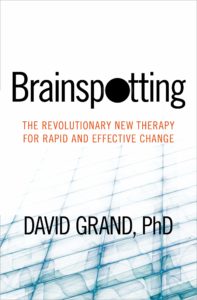 Trauma activates our body’s fight or flight system making us experience strong emotional and physical reactions without a logical cause. This can make you feel angry or scared before you can intellectually understand why you react that way. Reexperiencing trauma is not a choice. It is an unconscious reaction. Brainspotting is a revolutionary new trauma processing tool to help you process this unconscious reaction. To heal trauma we need a tool that will let you get out of your conscious mind and release the deep emotional and physical
Trauma activates our body’s fight or flight system making us experience strong emotional and physical reactions without a logical cause. This can make you feel angry or scared before you can intellectually understand why you react that way. Reexperiencing trauma is not a choice. It is an unconscious reaction. Brainspotting is a revolutionary new trauma processing tool to help you process this unconscious reaction. To heal trauma we need a tool that will let you get out of your conscious mind and release the deep emotional and physical
Brainspotting is based on the latest neuroscience available and is one of the newest and most effective treatments for trauma and PTSD. Brainspotting is a trauma treatment that allows you to release the grip that trauma has on your personality and emotion regulation system. Brainspotting heals trauma by activating the subcortical brain similar to how ketamine, MDMA, psilocybin and neurofeedback work. Unlike these treatments Brainspotting does not use any expensive equipment or require you to take psychedelic drugs. Brainspotting works similar to EMDR, somatic therapy, and parts based therapies; but works rapidly with minimal distress.
We’ll answer all of your Brainspotting questions, such as:
- What is brainspotting?
- How does Brainspotting work?
- What does brainspotting feel like?
- How much does brainspotting cost?
- What does brainspotting feel like?
What Is Brainspotting?
Brainspotting is an experiential treatment that activates the natural healing ability of the deep brain. Brainspotting does not require laborious analysis or re-experiencing the triggers from a traumatic event. Brainspotting allows you to release the effect of trauma on your emotions, mood and physical body. Brainspotting allows psychological trauma to be processed quickly without medication or behavioral retraining. Brainspotting works fast and causes minimal discomfort.Psychological trauma affects the subcortical brain’s ability to regulate our emotion, mood, and body. Brainspotting activates the healing potential of the subcortical brain, or body brain. In a brainspotting session, a therapist holds a pointer that you will follow with your eye. You and your therapist will look for an eye position that activates the physical and emotional memory of a traumatic event. Our brain associates certain eye positions with some traumatic memory and emotional reactions.Brainspotting allows you to feel your body brain directly and to turn off the “thinky” cognitive and language brain. During brainspotting processing you may feel strange sensations in your body or feel uncomfortable or unfamiliar emotions. The effects of brainspotting include rapid decreases in panic attacks, anxiety, blunted or flat affect, depression, dissociation, depersonalization and rapid mood changes. The benefits of brainspotting can include a stronger sense of self, improved emotion recognition, emotion regulation, improved emotional resilience and personal growth. Brainspotting is one of the fastest trauma processing tools available.
Who invented Brainspotting?
Brainspotting is an eye movement therapy similar to EMDR, invented by Dr. David Grand. Brainspotting is an experiential therapy, meaning that the healing process comes from your own direct experience. You do not need to memorize techniques or retrain your behavior. Brainspotting allows you to directly experience your unconscious mind and emotional states.Brainspotting is a self guided experience, meaning that you are incontrol of the process and learn directly from your experiences. The therapist in a Brainspotting session will give you minimal instructions and allow the session to proceed at a pace that you control. Brainspotting is less overwhelming than exposure therapy and processes trauma more deeply than cognitive or behavioral therapy alone.Brainspotting is a mind-body therapy, like EMDR, IFS, somatic experiencing, sensorimotor therapy, and AEDP. In a mind-body therapy you will reconnect with your body and use the experience to release stress and repressed emotion. Many traumatic reactions are stored in the body brain. Somatic therapies target similar brainstates, and heal trauma by using the subcortical brain. Without using the body it is difficult to heal the deep roots of a traumatic event.
How Does Brainspotting Work?
Trauma causes unconscious physical and emotional reactions. We may understand these reactions intellectually without being able to control them emotionally. Brainspotting allows you to process the physical and emotional reactions that trauma causes. Brainspotting is not a cognitive or analytical therapy. You will learn about yourself by directly experiencing your unconscious mind.
Unlike cognitive or behavioral therapies, Brainspotting targets the part of the brain that is most affected by psychological trauma. Brainspotting heals the subcortical brain and helps release strong emotions and traumatic memories from the part of your brain that has the deepest connections to your body. Brainspotting is able to directly access unprocessed trauma and eliminate its effects without long term talk therapy, behavioral retraining, or laborious analysis of past events.
Brainspotting can have life changing effects, but the process itself is quite simple and unintrusive. Brainspotting does not require extensive preparation or reexperiencing triggers. In a brainspotting session a therapist holds a pointer that you will follow with your eye. Sometimes a client will listen to music during the process or wear glasses that cover one eye. The Brainspotting process is simple and intuitive. There are specialized forms of brainspotting for specific conditions, but they all use this simple framework.
What is the Body Brain?
When trauma and extreme emotion is not experienced in the present it is stored in the body. When your brain experiences a traumatic event, the psychological trauma is stored in the subcortical “body brain”. Trauma stored in the body might be experienced as tension, chronic pain, flat affect , numbness, dissociation, rapid mood changes, hypervigilance, or an elevated stress response. These trauma reactions can cause damage to our relationships, professional life, and sense of personal identity. .
The subcortical brain regulates how much emotional energy, stress, and muscle tension we experience in a given situation. We learn how to experience emotion as children. Trauma can further entrench negative patterns in emotional expression. When we experience trauma or chronic stress our subcortical brain can become dysregulated. This creates extreme emotional responses, chronic tension, and anxiety. Therapy that does not use the unconscious and subcortical brain cannot heal the deepest effects of trauma.
What brainspotting are sessions like?
Unlike cognitive, behavioral, or analytical methods of therapy, brainspotting is simple and works very fast. In most cases you can discuss Brainspotting goals with your therapist in one session and be ready to begin brainspotting by the second session of therapy. Your experience during brainspotting can be intensely personal and hard to explain. The experience often does not fit into words as it takes place in the pre-lingual part of the brain. Most people experience a heightened awareness of their emotions and a heightened physical awareness during a brainspotting session. After a brainspotting session it is common to have increased awareness of how emotions affect your body. Brainspotting can be calming or stimulating, but deep awareness of emotion and physical movement are common effects.
There are several phases of brainspotting sessions. Brainspotting sessions are adjusted to fit an individual’s specific needs.
The general steps in the brainspotting process usually are:
- You and your therapist choose an area where life or emotion is overwhelming to you.
- Your therapist helps you map the physical reaction that your body has to the anxiety.
- You will concentrate on the physical sensations of the anxiety in your body.
- Your therapist will look for an eye position that stimulates the physical sensation that you are concentrating on.
- You will concentrate on the feeling that the eye position brings up.
- You will wait for the energy and sensation in your body and emotion to change.
- Your therapist may support you or help you understand the experience. However, you are the one experiencing the process. Your therapist is just there to help you stay centered on the experience.
- Once processing is slowing down your therapist will ask if you are ready to move the pointer and end the session.
- You will be given a few minutes to reflect on the experience and debrief with your therapist. Your therapist will answer any questions you have about the session. Your therapist will help support you in difficult experiences and help you contain confusing parts of experience.
- Your therapist will explain the dreams, sensations and memories that brainspotting may bring up. You will make a plan with your therapist to explore what happened during processing outside of the therapy room next session.
- You and your therapist will discuss what you are noticing in brainspotting processing.
- You repeat this process until processing is complete.
Does Brainspotting Actually Work?
Brainspotting can help you revisit and release the unprocessed remnants of past traumatic events. Muscle tensions, uncomfortable emotion, scary childhood experiences, and panic responses can all be experienced and then let out of the body and the brain.
Often during a Brainspotting session we feel our physical reactions to negative emotion in a “slow motion” type way. You may feel the stress responses from your life slowly move through your body. This can give us insights into how we react to stress and help us have better emotional control during negative experiences. Additionally, Brainspotting can help you feel the emotions “under” your life and conscious experience. This can help you bring the avoidant or compulsive parts of you from the unconscious into the conscious mind.
Brainspotting processing makes it easier for most people to recognize and regulate emotions and control their reactions. Brainspotting can help you remember traumatic and stressful events more clearly. Brainspotting can reduce the effects of psychological trauma. Brainspotting can help you achieve peak performance in sports or at work. Brainspotting can also help you discover unknown parts of your personality and grow personally.
Tens of thousands of therapists are trained in Brainspotting.
These are evidence based research studies on the efficacy of Brainspotting:
- Brainspotting Therapy: About a Bataclan Victim
- Psychotherapeutic Techniques for Distressing Memories: A Comparative Study between EMDR, Brainspotting, and Body Scan Meditation
- Brainspotting – the efficacy of a new therapy approach for the treatment of Posttraumatic Stress Disorder in comparison to Eye Movement
- Desensitization and Reprocessing
- Report of Findings from the Community Survey September 2016
- Effective treatments for generalized anxiety disorder
- Persistent Genital Arousal Disorder as a Dissociative Trauma Related Condition Treated with Brainspotting – A Successful Case Report
- Brainspotting: Sustained attention, spinothalamic tracts, thalamocortical processing, and the healing of adaptive orientation truncated by traumatic experience
- A preliminary study of the efficacy of Brainspotting – a new therapy for the treatment of Posttraumatic Stress Disorder
- Brainspotting: Recruiting the midbrain for accessing and healing sensorimotor memories of traumatic activation
- Developing a sustainable child and family service system after a community tragedy: Lessons from Sandy Hook
- Recognition of the neurobiological insults imposed by complex trauma and the implications for psychotherapeutic interventions
- What Do People Believe About Memory? Implications for the Science and Pseudoscience of Clinical Practice
- Journal for Psychotraumatology, Psychotherapy Science and Psychological Medicine.
- Brainspotting: Sustained attention, spinothalamic tracts, thalamocortical processing, and the healing of adaptive orientation truncated by traumatic experience
- Brainspotting research, technology broadens counselor education students’ perceptions
- Recognition of the neurobiological insults imposed by complex trauma and the implications for psychotherapeutic interventions†
- Brainspotting reduces disturbance and increases Heart Rate Variability linked to distressing memories: A pilot study
- Spot the Anger: Reducing Anger and Irritability with Brainspotting
- Eye movement desensitization and reprocessing therapy and related treatments for trauma: An innovative, integrative trauma treatment.
- EAP and COVID-19: Brainspotting Proving Useful in Treating COVID-19 Trauma
- Emerging Trauma Therapies: Critical Analysis and Discussion of Three Novel Approaches
Unlike other forms of therapy, the majority of processing in a brainspotting session is done outside the room. EMDR and Somatic therapies are processing techniques that you work on with your therapist. A brainspotting session can be thought of as unblocking a path or opening a box in your unconscious mind. The majority of Brainspotting processing happens outside the therapy office as your brain heals and integrates previously compartmentalized content.
During processing after brainspotting you may have intense and symbolic dreams, notice that you have more time to react to your emotions, or feel yourself learn to regulate your body. Processing after a brainspotting session is likely to last a few days but can sometimes last a few weeks. Processing may leave you feeling raw, but it is not destabilizing or decompensating like other forms of therapy.
Where Brainspotting Fits in a Holistic Therapy Plan
Brainspotting is only one part of a treatment plan. We believe that the more models of psychotherapy a provider knows, the more that they are able to integrate to help you. We want to have a big bag of tools for you because we know that everyone is different. Jungian (link), parts based (link), and somatic (link) therapy integrate easily into Brainspotting treatment.
For trauma, PTSD, panic and dissociation brainspotting is a rapid and effective treatment option. For everything else brainspotting is a powerful addition to your treatment to make sure it is lasting and effective. Brainspotting can help you clarify feelings and discover new treatment goals. Brainspotting can help you sit with difficult feelings and access hard to pin down emotions. THis may help you discover treatment goals that you didn’t even think about when you first came to therapy.
Brainspotting helps you improve your mind-body relationship. Brainspotting can leave you with skills that will help you accomplish your goals long after therapy is over. Brainspotting can help make sure that the progress you make in therapy is permanent.
How to Choose a Brainspotting Therapist Near You
Reputation
Taproot therapy specializes in brainspotting for trauma. All of our clinicians have brainspotting training. It is our mission to provide you the most cutting edge services and neuroscientifically backed treatment available for anxiety, trauma and PTSD. Our clinicians have received training in modern approaches to trauma therapy. We do not use a one size fits all approach. We see therapy as a collaborative and creative process. It is our goal to provide personalized care that is fast and effective.
Qualifications
Therapy is simply one part of the journey to growth and self discovery that every human is on. Our therapists want to work with you to help you find the best version of yourself. A diagnosis will never be used to label or define you. We see therapy as a process of mutual respect and compassion, not as a hierarchy where an expert dictates treatment mandates. We have curated a professional network of other practitioners who hold this same philosophy.
Community involvement
We want you to get therapy, even if it is not with us. If we are not a good fit we will refer you to someone who is. We believe that the best treatment for many mental health issues is prevention and awareness and the involvement of a mindful and educated community. We provide ongoing mental health education and continuing education for professionals. We are always looking for new opportunities for community involvement. If you would like to book a mental health speaker for your event please send us an email.
Budget
Everyone deserves access to high quality and effective therapy. We never want finances, culture, generational experience, religious faith, gender or sexuality to be a barrier to a person receiving care. While we take insurance, we also offer a sliding scale for patients without insurance. We make every effort to help you find the services that you need in our community, even if those services are not provided by Taproot.
How Much Does Brainspotting Cost?
The Cost of Unhealed Trauma
Unhealed trauma can be disastrous when it causes problems at home and on the job. Trauma can disrupt your relationships with friends and family. Trauma can make it difficult to have intimate relationships, communicate, or regulate emotions. Not being able to control your reactions to life events can cost money and stop you from achieving your goals.
How to Save Money
Before starting therapy you want to make sure that your therapist has the tools you need to help you heal from what you are bringing into treatment. Ineffective therapy can be worse than no therapy at all. We know that psychotherapy costs time and money. Taproot Therapy Collective will pair you with the right ind of therapist for your needs.
Taproot Therapy Collective therapists have extensive training in multiple methods of treating PTSD. We want to help you reach your unique goals as fast as possible. Brainspotting is a fast and effective way to reach your goals for therapy. If you want to complete trauma treatment quickly, then Brainspotting is a good place to start.
Is DIY Brainspotting an Option?
You should only undertake trauma treatment with a trained professional. However, Brainspotting will leave you with many tools to continue growing and healing long after therapy ends. Your therapist can teach you ways to “self spot” so that you can self soothe and process anxiety on your own.
Brainspotting lets you make contact with difficult to access memories and emotions. This can help you continue your journey to find the unique you long after you leave treatment. Brainspottign can make it easier for you to feel your emotions and explore parts of yourself.
Some of the benefits that you might take away from a Brainspotting session include
- Becoming comfortable with being vulnerable
- Becoming comfortable with emotion
- Increased focus and control
- Increased career performance
- More creativity and motivation
- Feeling more aware of your thoughts and desires
- Having a stronger sense of self and increased pride in who you are
- A stronger connection to your body and muscles
- Finding it easier to relax and sleep
- Increased motivation and vitality
- Increased performance mental, athletic, and professional performance
Please Read These Posts Before Getting Started
https://www.goodtherapy.org/learn-about-therapy/types/brainspotting-therapy
Brainspotting for Addiction Treatment: Everything You Need To Know
https://www.discovercounselingcollective.com/blog/2019/9/23/an-introduction-to-brainspotting







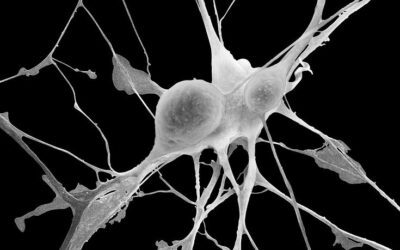


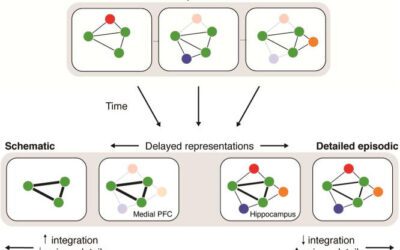

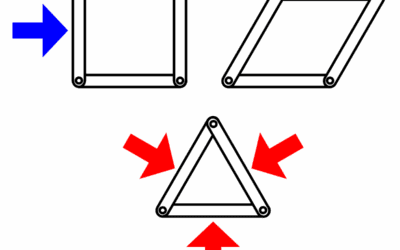



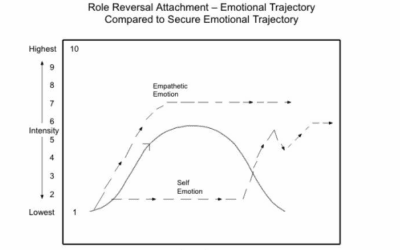








0 Comments